By Bryce Edmonds
From Natural Foods Merchandiser
November 1, 2004 2:20:16 PM
Increasingly, science is giving a firm foundation to this oft-misunderstood medicine Here’s a riddle: What is the only natural remedy classified as a drug, but yet no one knows how it works? Answer: homeopathy. Yes, strangely, the one system that may make healing claims and still be within the law is the one system that many people scoff at because of its unorthodox approach.
Primer in brief
Homeopathy was discovered by German physician Samuel Christian Hahnemann in the late 18th century and is based on “the principle of similars”—basically, that a disease is cured by a medicine that causes a physiologic response similar to the symptoms of the disease. Hahnemann conducted “provings” wherein healthy volunteers took repeated doses of common remedies and he noted the symptomatic responses. Homeopathic remedies are manufactured to be highly dilute—sometimes so dilute that none of the actual substance remains, but merely its “spirit-like” nature, to use Hahnemann’s terminology.
Survey says…
Increasingly, the science behind homeopathy is piling up. According to Jay Bomeman, chairman and chief executive officer of the Standard Homeopathic Co. and director emeritus of the National Center for Homeopathy, an early and important study—and one of the first in a widely read peer-reviewed journal—was published in the British medical journal The Lancet in 1986. The randomized, double-blind, placebo-controlled trial conducted on 144 hay-fever sufferers found that the homeopathically treated patients showed “significant reduction” in patient- and doctor-assessed symptom scores.
Researchers concluded, “No evidence emerged to support the idea that placebo action fully explains the clinical responses to homeopathic drugs.” They also noted that patients receiving homeopathic remedies more often experienced an initial aggravation of symptoms followed by improvement. Bomeman, who calls this study “the one that got things going,” says that data from this early work tended to show that intervention with a homeopathic medicine, in very low doses, had a mediating effect on rhinitis [nasal
irritation or inflammation] symptoms.”
One of the first clinical studies accepted into a peer-reviewed U.S. journal, according to Bomeman, looked at treatment of acute childhood diarrhea (Pediatrics, 1994).
Researchers from the Department of Epidemiology at the School of Public Health and Community Medicine of the University of Washington studied 81 children ages 6 months to 5 years old in Leon, Nicaragua. This randomized, double-blind clinical trial found that the treatment group had a statistically significant decrease in duration of diarrhea and a significant decrease in the number of stools per day after 72 hours of treatment. “This work had particular public health interest because dehydration secondary to diarrhea is a devastating childhood illness in developing countries,” Bomeman says.
Another landmark study was published in The Lancet in 1997. Researchers conducted a meta-analysis (a study of existing studies) to determine if the clinical effects of homeopathy were, in fact, placebo effects. They reviewed 185 studies, found that 119 met their inclusion criteria and used 89 with adequate data for meta-analysis.
“In this work, Linde and colleagues took a critical look at a number of previously published studies to determine methodological rigor, robustness and outcome,” Bomeman says. “They concluded that the literature tended to confirm the positive clinical effects of certain homeopathic treatments.” However, the researchers also stated that they “found insufficient evidence from these studies that homeopathy is clearly efficacious for any single clinical condition. Further research on homeopathy is warranted provided it is rigorous and systematic.”
Another breakthrough study, according to Bomeman, was published in the peer-reviewed journal Perfusion in 1999. Researchers studying rats compared damage from ischemic injury (injury caused by decreased blood supply) because of an induced stroke-like event when treated with homeopathic Arnica montana, a glutamate and potassium mixture, or placebo. They concluded that Arnica montana “appears to reduce long-term damage and mortality from brain injury but may exacerbate the immediate effects of ischemia.” This long-term damage reduction “may limit tissue necrosis and, therefore, reduce the long-term effect of stroke,” Bomeman says.
A peer-reviewed study published in 2001 in The Pediatric Infectious Disease Journal found significant symptom reduction in children suffering acute otitis media (ear infection). However, the study’s results, while clinically significant, were not statistically significant. Seventy-five children ages 18 months to 6 years were enrolled in the study, and researchers concluded that 243 children would be needed for significant results. “These results suggest that a positive treatment effect of homeopathy when compared with placebo in acute otitis media cannot be excluded and that a larger study is justified,” they wrote. According to Bomeman, positive results in follow-up studies would be significant since ambulatory care visits for OM represent 12.4 percent of all doctor visits for children in the United States under the age of 15, and more than $3 billion annually.
So, while they might not know why homeopathy and its “spirit-like” methods may work, researchers are increasingly finding that the science of homeopathy is very down-to-earth. And that’s good news for consumers looking for alternatives—and the retailers who know that science is giving homeopathy a home.
Natural Foods Merchandiser volume XXV/number 11/p. 44


